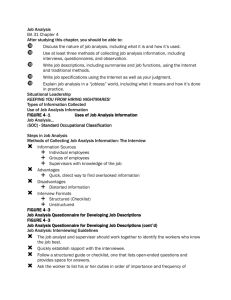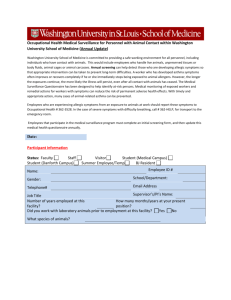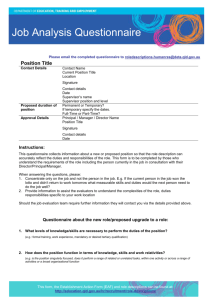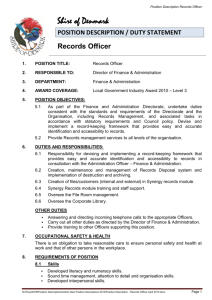Use of Job Analysis Information
advertisement
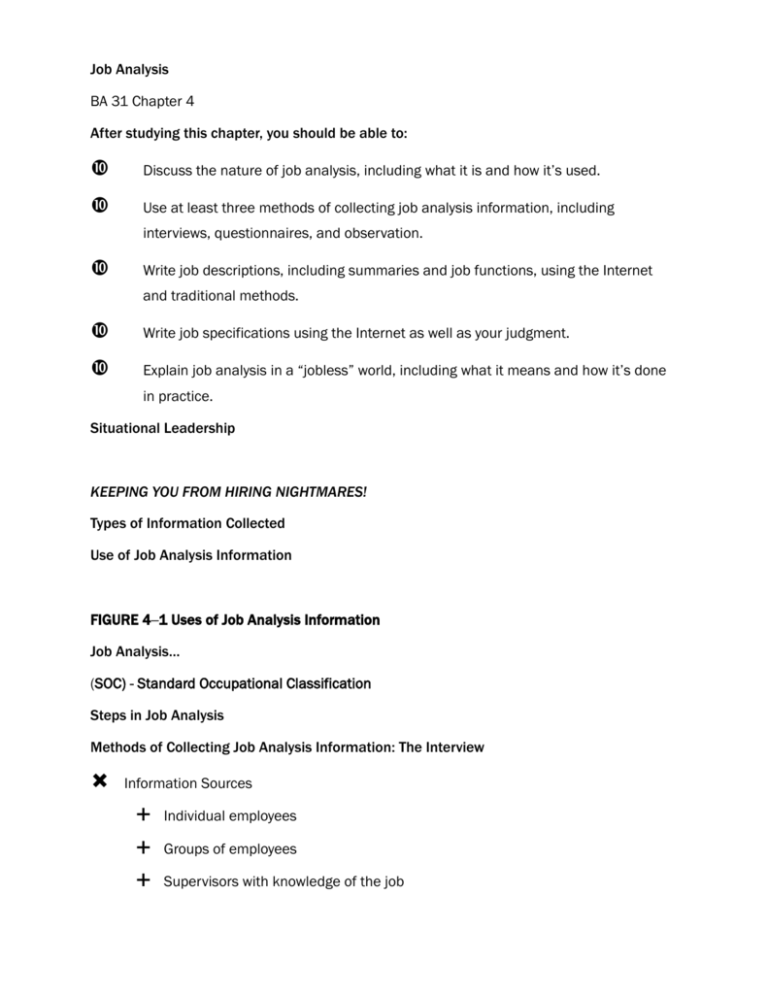
Job Analysis BA 31 Chapter 4 After studying this chapter, you should be able to: Discuss the nature of job analysis, including what it is and how it’s used. Use at least three methods of collecting job analysis information, including interviews, questionnaires, and observation. Write job descriptions, including summaries and job functions, using the Internet and traditional methods. Write job specifications using the Internet as well as your judgment. Explain job analysis in a “jobless” world, including what it means and how it’s done in practice. Situational Leadership KEEPING YOU FROM HIRING NIGHTMARES! Types of Information Collected Use of Job Analysis Information FIGURE 4–1 Uses of Job Analysis Information Job Analysis… (SOC) - Standard Occupational Classification Steps in Job Analysis Methods of Collecting Job Analysis Information: The Interview Information Sources Individual employees Groups of employees Supervisors with knowledge of the job Advantages Quick, direct way to find overlooked information Disadvantages Distorted information Interview Formats Structured (Checklist) Unstructured FIGURE 4–3 Job Analysis Questionnaire for Developing Job Descriptions FIGURE 4–3 Job Analysis Questionnaire for Developing Job Descriptions (cont’d) Job Analysis: Interviewing Guidelines The job analyst and supervisor should work together to identify the workers who know the job best. Quickly establish rapport with the interviewee. Follow a structured guide or checklist, one that lists open-ended questions and provides space for answers. Ask the worker to list his or her duties in order of importance and frequency of occurrence. After completing the interview, review and verify the data. Methods of Collecting Job Analysis Information: Questionnaires Information Source Have ____________________________ to describe their job-related duties and responsibilities Questionnaire Formats ________________ checklists _____________ questions Advantages Quick and efficient way to gather information from large numbers of employees Disadvantages Expense and time consumed in preparing and testing the questionnaire Methods of Collecting Job Analysis Information: Observation Information Source _____________________ the physical activities of employees as they go about their jobs Advantages Provides ________________________ Reduces distortion of information Disadvantages ________________________________ Difficulty in capturing entire job cycle Of little use if job involves a _________________________________ Methods of Collecting Job Analysis Information: Participant Diary/Logs Information Source Workers keep a ________________________________________ of what they do and the time spent on each activity Advantages Produces a _____________________________ of the job Employee _____________________________ Disadvantages ________________________________________ Depends upon employees to accurately recall their activities FIGURE 4–4 Example of Position/Job Description Intended for Use Online FIGURE 4–4 Example of Position/Job Description Intended for Use Online (cont’d) FIGURE 4–4 Example of Position/Job Description Intended for Use Online (cont’d) Competency-Based Job Analysis Competencies _______________________ of a person that enable performance of a job. Reasons for Competency-Based Job Analysis To support a high-performance work system. To create strategically-focused job descriptions. To support the performance management process in fostering, measuring, and rewarding: General competencies Leadership competencies Technical competencies Job Specifications…. Writing Job Specifications Steps in the Statistical Approach ***Analyze the job and ______________________________________ ***Select _________________________ that you believe should predict successful performance. __________________________ for these traits. Measure the candidates’ subsequent job performance. Statistically analyze the relationship between the ______________________________________________________ Writing Job Specifications DEFINING YOUR CORPORATE CULTURE….. The Disney look…. Examples of Personal Traits Organized Self-Starters Positive/Friendly Personality Teachable Coachable Attention to detail Type A personality Type B personality Responsive Motivated Employment Personality Tests The EEOC does not validate pre-employment assessments nor does the Office of Federal Contract Compliance. As far as employment assessments are concerned, the extent of their authority is to audit or investigate unacceptable procedures when a discrimination charge has resulted from adverse impact. Their investigation pertains to all employee selection procedures. There have been very few disparate impact cases involving pre-employment assessments because those assessments generally do not have an adverse impact on any protected group. That does not preclude misuse of an employment assessment by requiring unreasonably high or restrictive standards that would not be a bona fide occupational qualification. Working Conditions: OSHA ISSUES? Extreme weather conditions __________________________________ Noise (Airport) _____________ Spaces Extreme Altitudes ________________ conditions Woodworking (Shavings) Heavily perfumed areas __________________ (allergy) Job Analysis in a “Jobless” World Job Analysis in a “Jobless” World (cont’d) Writing the job Description Writing Job Descriptions Using the Internet for Writing Job Descriptions O*NET™ Online http://www.biztrain.com/products/descriptionsnow.htm Occupational Employment and Wage Estimates… http://www.bls.gov/ What are Occupational Codes? TABLE 4–2 SOC Major Groups of Jobs – Standard Occupational Codes FIGURE 4–9 Marketing Manager Description from Standard Occupational Classification (SOC CODE) = (US federal job classification system) Mean and Median – What’s the Difference??? Wage Range: Wage/Hour information from DOL… DETERMINING THE STATUS OF THE POSITION…. EXEMPT Exempt v. Non-Exempt? The audit: test your compliance Contractor? Employee? Recap – summary and steps: The Job Description Summary Job Identification Job title *FLSA =__________________________________status section – Exempt/NonExempt? Wage Job Summary General nature of the job Major functions/activities Relationships Reports to: Supervises: Works with: Outside the company: Major Responsibilities and Duties Major responsibilities and duties (essential functions) Decision-making authority Direct supervision Budgetary limitations Standards of Performance and Working Conditions What it takes to do the job successfully Written Job Description ________________________________ Writing Job Descriptions: Steps Step 1. Decide on a Plan Step 2. Develop an Organization Chart Step 3. Use a Job Analysis/Description Questionnaire (Done) Step 4. Obtain Lists of Job Duties from O*NET Step 5. Compile the Job’s Human Requirements from O*NET – SOC code? Step 5 Determine Wage/Hour – Exempt – Non-Exempt Step 6. Complete Your Job Description
